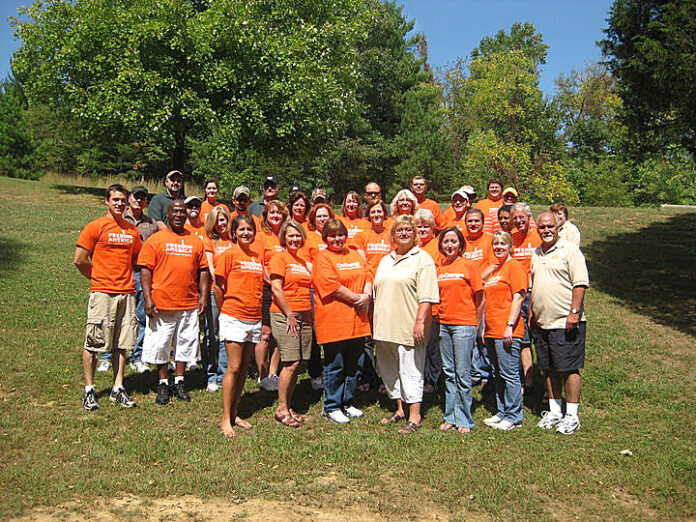
Virginians who have watched the national news lately have likely seen images of scores of gaunt East Africans wandering across the parched land, bearing starving children in their arms. Many may have inwardly sighed with relief that “we don’t have hunger in Virginia.”
Jeremy Butterfield, Media and Communications Director of Feeding America Southwest Virginia (formerly Virginia Second Harvest Food Bank), would have to disagree. While we don’t face famines like the one presently in Africa we do have alarming levels of hunger in Virginia.
“For 30 years now, Feeding America Southwest Virginia has provided food for hundreds of thousands of hungry and ‘food insecure’ Virginians; more than 144 million pounds of food was distributed last year and lots more will go out this year,” Butterfield said. “Due to the economic situation in the country and high gas prices, the need is growing.”
In 1981, the Salem/Abington-based organization began as a TAP program spearheaded by Cabell Brand in his basement office on Shenandoah Avenue, according to Butterfield.
“Whereas we once were merely part of another non-profit (TAP), delivering less than half a million pounds of food per year, we are now part of a network of over 200 local food banks distributing over 14 million pounds of food in 26 Virginia counties,” Butterfield said.
He explained that the local food bank not only collects food from local manufacturers, retailers, farmers and government sources, but also tracks, safety-checks, takes inventory, and then distributes food received from Feeding America and other local sources to hungry people throughout much of the state.
“In addition, it’s our job to secure funding from local corporations, churches and other organizations, as well as individual donors,” Butterfield said. “Corporations are beginning to find out that it’s just good business to show the public and the surrounding community that you care about its most vulnerable members,” he added.
Butterfield lauded the fact that Food Lion, Wal-Mart, Kroger and other national and local grocery store chains have pitched in together “in a very non-competitive way” to help those in need by contributing both food and money. Those companies have been joined in the effort to give by a large host of other local businesses such as ITT, Delta Dental and Colonial Webb Contractors.
National giving partners include movie stars like Jennifer Aniston, and many other celebrities, but according to Butterfield, over a hundred churches in the Roanoke Valley should also be credited with being regular financial and food stuff contributors, trying to alleviate the hunger problem right here in Southwest Virginia.
“George Kegley, a member of Saint Mark’s Lutheran Church in Roanoke, told me that he had noticed a number of well-dressed people who seem embarrassed to be leaning on the church’s food bank lately, but they come because they are hungry,” Butterfield said. “That’s because the Supplemental Nutrition Assistance Program (SNAP)/(Food Stamps) leaves many of the working poor without food assistance.”
Despite the increasing need, Butterfield said he’s grateful to see that farmers’ markets are now accepting food stamps for fruits and vegetables.
“The face of hunger may be harder to recognize now,” Butterfield said, “Sometimes people suffering from malnutrition are plump because junk food is so much cheaper than fruits and vegetables.”
According to the agency’s local website, “Feeding America Southwest Virginia delivered 84,065 pounds of food and water to its partner agencies after two tornados hit last April in the Pulaski/Glade Spring areas. Last year, volunteers donated more than 18,000 hours of service time doing everything from sorting food to management consulting and speaking to groups.
“This year Feeding America Southwest Virginia is celebrating our 30th year of working with community partnerships to feed hungry people,” Butterfield said with a broad smile, adding, “Although our ultimate goal is to shut down this agency, that won’t happen until the need disappears. Last year we grew from 10 backpack programs for children to 30 in Virginia, due to markedly increased need.”
Backpack programs supply food inconspicuously for children who need it after the school days are over. The national “Feeding America” website states that many American children are receiving “less than 70 % of the nutrients required” for their health and proper growth. That’s probably why Feeding America Southwest Virginia sent home over 19,000 backpacks last year.
Butterfield said that area grocers and a large number of businesses like Starbucks and Pizza Hut have partnered with his agency to get safe, consumable food to the doors of those who need it in a program called “Prepared and Perishables.”
“This program rescues about 100,000 pounds of food a month,” Butterfield said, “and these are the kinds of ideas that keep Feeding America Southwest Virginia evolving in the right direction. We also want people to remember that September is “Hunger Awareness Month,” so if you think you don’t know anyone in your community who is hungry, please think again.”



I have been trying to contact Joan Blevins at Feeding America and leaving messages for her for over one week in order to receive emergency food help with no response. The new computerized answering system leaves no other options but her to contact for help. I think this organization sucks.
Bob Clark